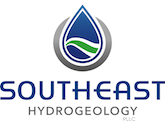Water wells are a crucial resource for many communities, providing essential access to groundwater. However, the design, construction, and rehabilitation of water wells require careful consideration and adherence to best practices. In this blog, we will explore various aspects of water well management, including common mistakes, effective strategies, and the importance of ongoing maintenance and rehabilitation.
Understanding the Basics of Water Wells
Water wells tap into underground aquifers to supply water for drinking, irrigation, and other uses. The process of drilling a well involves creating a hole in the ground to reach the water source. Once the well reaches the aquifer, it is crucial to ensure that it is designed and constructed correctly to maximize efficiency and longevity.
Best Practices in Water Well Design
The design phase is critical in ensuring a well’s success. Key considerations include:
- Site Selection: Choose a location that is geologically suitable for drilling and far from potential contaminants.
- Hydrological Assessment: Conduct tests to understand the water table, aquifer capacity, and water quality.
- Material Selection: Use high-quality materials that can withstand the corrosive nature of groundwater.
- Design Specifications: Ensure the well design meets local regulations and standards while accommodating expected water demands.
Common Mistakes in Well Construction
Even with a solid design, construction mistakes can lead to significant problems. Here are some common pitfalls:
- Inadequate Planning: Rushing the construction process without proper planning can result in poor outcomes.
- Ignoring Geotechnical Studies: Failing to conduct thorough geological assessments can lead to unexpected issues.
- Low-Quality Materials: Using inferior materials can compromise the well’s integrity and lifespan.
- Neglecting Regulations: Disregarding local laws can lead to legal issues and potential fines.
Planning for Well Rehabilitation
Over time, even the best-designed and constructed wells may require rehabilitation due to wear, sediment buildup, or changes in water quality. Planning for rehabilitation involves:
- Regular Monitoring: Conduct ongoing assessments to track well performance and water quality.
- Establishing a Maintenance Schedule: Create a timeline for regular maintenance tasks, such as cleaning and inspecting the well.
- Budgeting for Repairs: Allocate funds for potential rehabilitation costs to avoid financial strain when issues arise.
Avoiding Failure in Well Management
Failure to manage wells effectively can lead to reduced water quality and availability. To prevent this:
- Implement Monitoring Systems: Use technology to monitor water levels, quality, and well performance continuously.
- Educate Staff: Train personnel on best practices and the importance of regular maintenance.
- Document Maintenance Activities: Keep detailed records of all maintenance and rehabilitation efforts for future reference.
Well Development Techniques
Well development is a crucial step that ensures the well performs at its best. Effective techniques include:
- Flushing: Remove drilling debris and sediments from the well to improve water flow.
- Surging: Use a surge block to create pressure changes that help dislodge materials from the well screen.
- Chlorination: Disinfect the well to eliminate bacteria and other contaminants.
Changes in Drilling Fluids
Drilling fluids play a vital role in the construction of water wells. Recent changes in available drilling fluids can affect the well’s development and performance:
- Polymer Additives: Some drilling fluids now contain polymers that can complicate well development if not properly managed.
- Environmental Considerations: Choose drilling fluids that minimize environmental impact while ensuring effective drilling.
Naturally Mined Materials in Wells
The materials used in well construction significantly impact its longevity and performance. Key considerations include:
- Quality of Gravel Pack: Use high-quality gravel to ensure proper filtration and prevent sediment from entering the well.
- Screen Selection: Choose screens that are appropriate for the well’s expected yield and aquifer characteristics.
Determining Completion of Well Development
Knowing when a well is fully developed is essential for ensuring optimal performance. Indicators include:
- Stable Water Levels: Monitor water levels to ensure they remain consistent during pumping tests.
- Low Turbidity Levels: Conduct tests to confirm that the water is clear and free of sediment.
Pros and Cons of Specialized Well Contractors
Bringing in specialized contractors for well development can offer numerous advantages:
- Expertise: Specialized contractors have extensive knowledge and experience in well development techniques.
- Efficiency: They often have access to advanced equipment and technologies that can expedite the process.
- Cost-Effectiveness: While there may be upfront costs, their expertise can lead to long-term savings through improved well performance.
However, there are also potential downsides:
- Higher Initial Costs: Hiring specialized contractors can be more expensive than using in-house staff.
- Coordination Challenges: Managing multiple contractors can complicate project timelines and communication.
Conclusion
Effective water well management requires a comprehensive approach that encompasses design, construction, and rehabilitation. By adhering to best practices and avoiding common pitfalls, communities can ensure their water wells provide reliable and safe water for years to come. Regular monitoring, maintenance, and planning for rehabilitation are essential components of a successful water well management strategy.
For more information and resources on water well management, feel free to reach out to industry experts or consult relevant literature.
